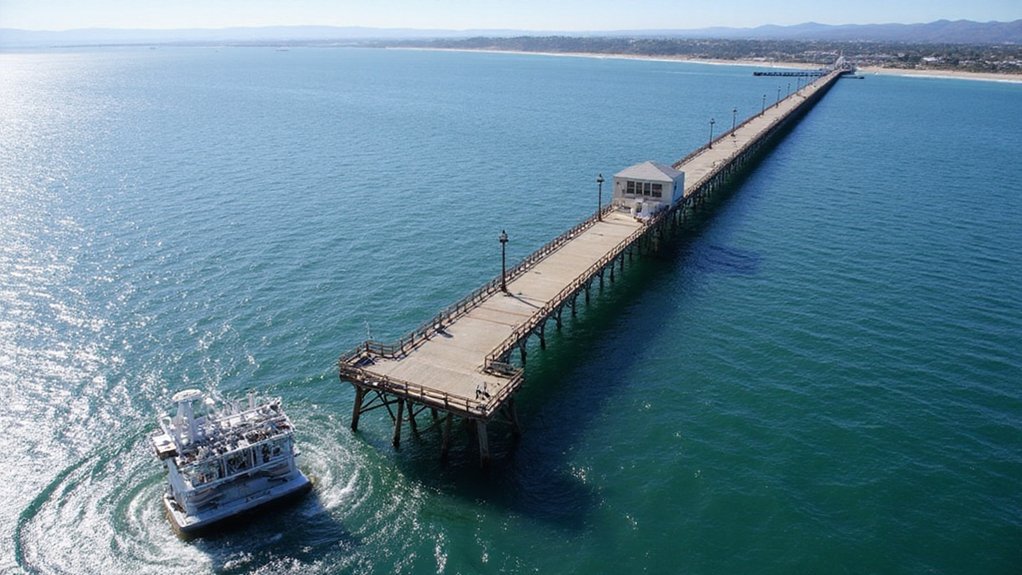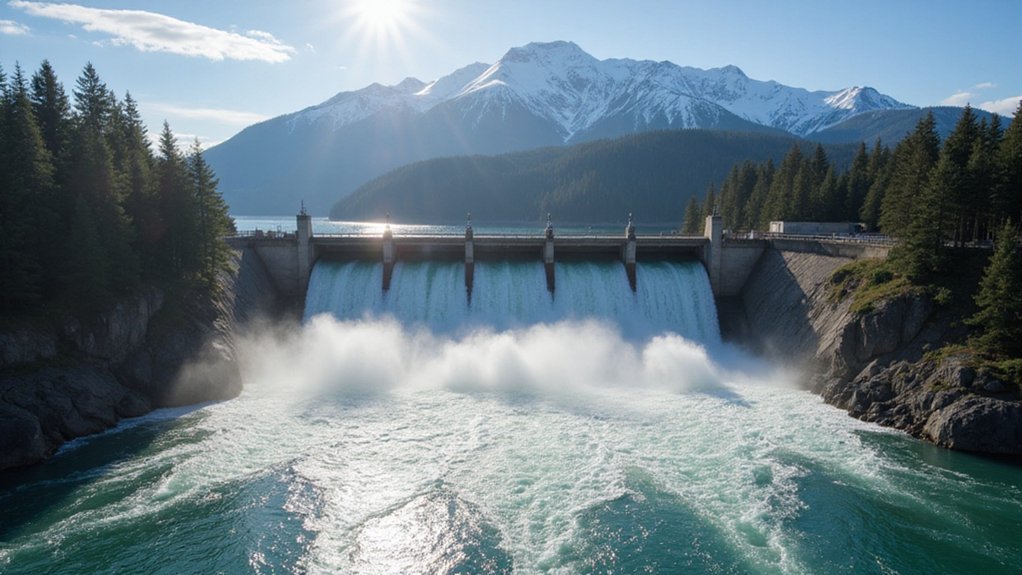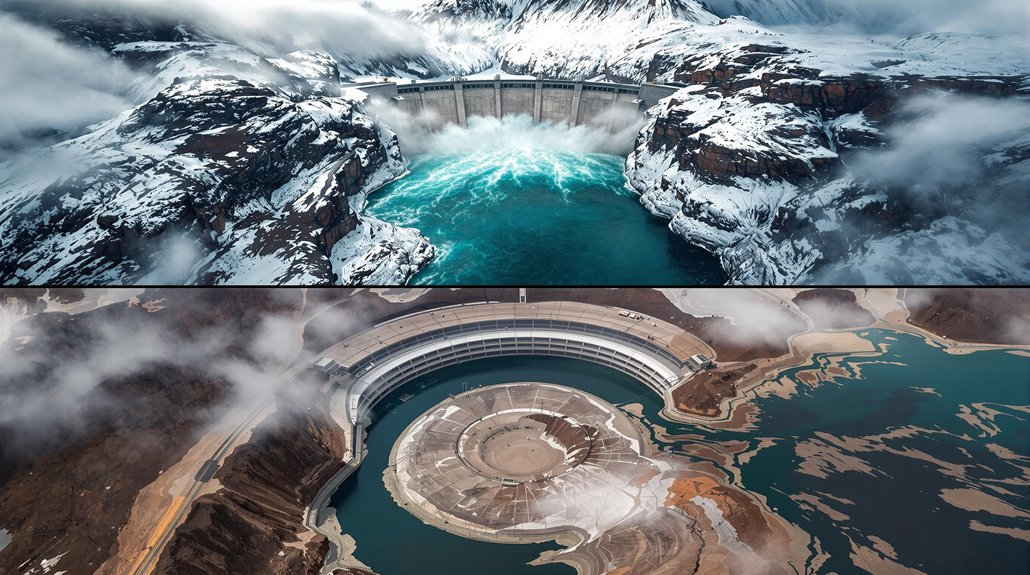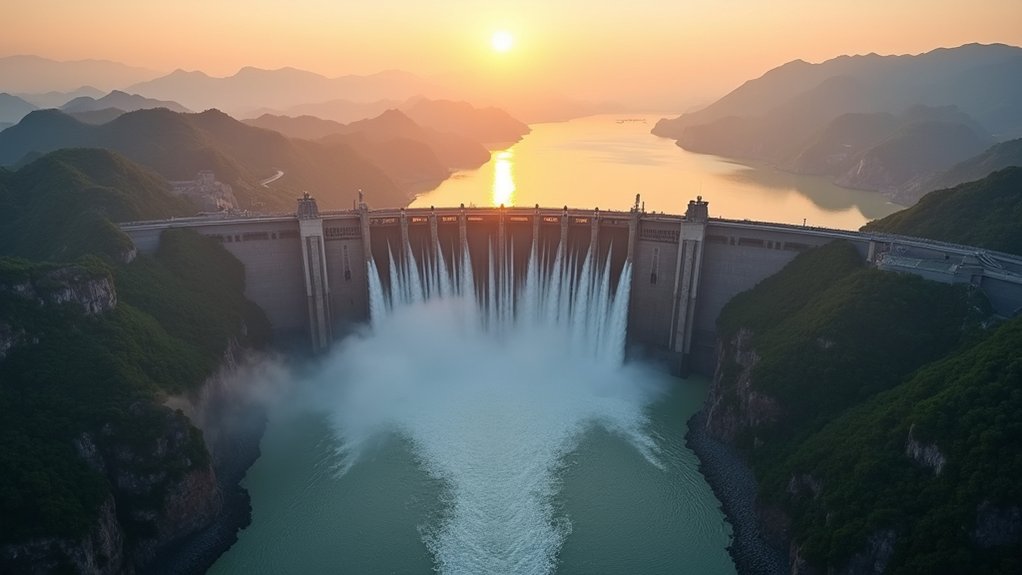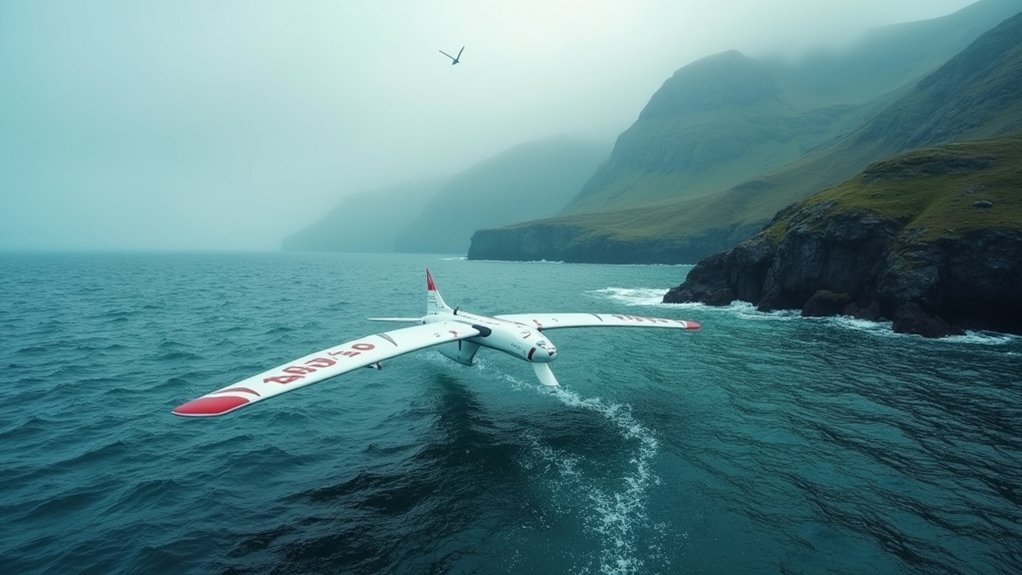The U.S. Department of Energy’s TEAMER program has named Cal Poly Pier as the country’s first open-water wave energy testing hub. Located in San Luis Obispo Bay, this 3,000-foot marine research station will begin operations in May 2025. Researchers now have direct ocean access to test wave energy converters and other marine technologies. The facility aims to improve renewable energy integration while studying environmental factors that affect efficiency. What impact might this breakthrough have on America’s energy future?
In a major development for wave energy research, Cal Poly Pier has been selected as the first open-water research pier by the federally-funded TEAMER program in May 2025. The pier is located about 11 miles south of Cal Poly’s main campus in Avila Beach. This partnership aims to boost new wave energy technologies that can capture power from the ocean.
The Cal Poly Pier offers a 3,000-foot-long marine research station in San Luis Obispo Bay. It has 13,500 square feet of deck space and includes a 2,000 square foot, two-story building with classroom and conference areas. What makes this facility special is that researchers can drive right onto the pier, giving them easy access to the ocean for their work.
TEAMER stands for Testing Expertise and Access to Marine Energy Research Program. It’s run by the U.S. Department of Energy and was first announced in March 2019. The program connects people who create wave energy technology with testing facilities across the country.
Connecting innovative marine energy developers with testing facilities nationwide since 2019 under DOE leadership.
With this new designation, Cal Poly Pier joins a network of nearly 50 facilities nationwide. While most existing sites offer only lab testing, Cal Poly Pier provides something unique – direct, drivable access to the ocean environment. The pier’s flow-through seawater system provides 100 gallons per minute to support additional aquaculture studies alongside energy research. Other testing sites include vessel access in Washington state and a tidal test stand in Massachusetts.
Testing at Cal Poly has already included devices called wave energy converters. These machines capture the up-and-down motion of waves to create electricity. Researchers use special tools to measure how fast generators spin and how much power they produce. The most successful test recorded power generation of 114.6 watts at 1000 rpm. This secured facility within the harbor allows for diverse equipment deployment beyond just wave energy devices, including sensors and autonomous underwater vehicles.
The testing considers different ocean conditions, from calm seas to stormy weather. Environmental factors are important too – the largest waves at this location come from the West-Northwest during spring and fall months. Ocean currents and tides also affect how well these wave energy devices work. This research facility aligns with the projected energy storage capacity growth that’s essential for integrating renewable marine energy into the power grid.
References
- https://www.calpoly.edu/news/cal-poly-pier-designated-wave-energy-testing-site-federally-funded-program
- https://teamer-us.org/facility/cal-poly-pier/
- https://ucm.calpoly.edu/news/cal-poly-pier-designated-wave-energy-testing-site-us-department-energy-funded-program
- https://digitalcommons.calpoly.edu/cgi/viewcontent.cgi?filename=1&article=1856&context=mesp&type=additional
- https://mhkdr.openei.org/files/500/CalWave-EE0008097-FinalPublicTestReport.pdf
